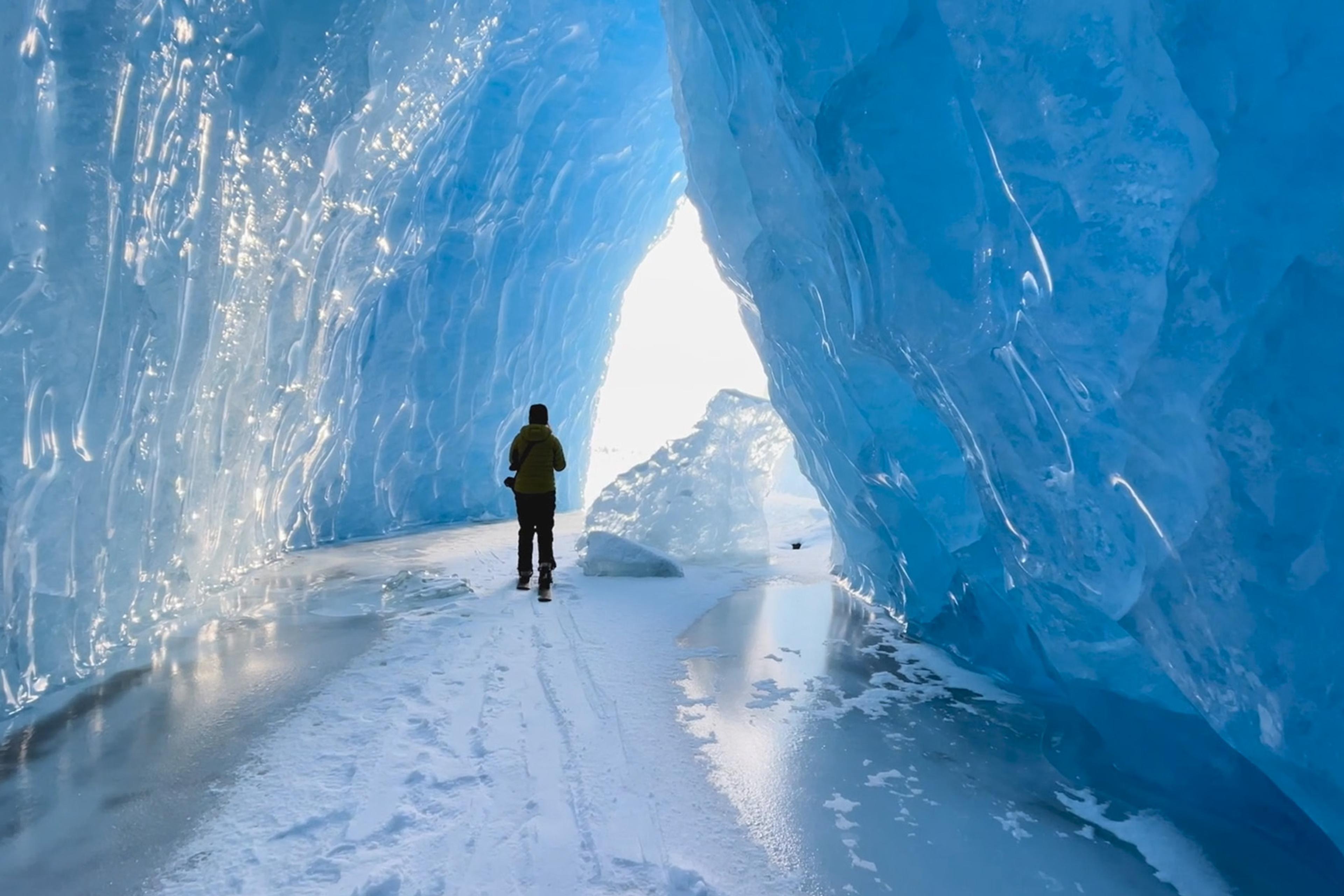‘In the past we’ve carved in stone and drawn on ivory, but this is a new idea.’
Perhaps the most widely celebrated Inuit artist of her time, Kenojuak Ashevak (1927-2013) was born into a nomadic life in Canada’s far northeast, travelling by dogsled between camps with the seasons. Her artistic skills evolved from embroideries she worked on as a child. Back then, she surely couldn’t have imagined that the fantastical animals of her imagination would come to be seen as masterpieces by the ‘people from the south’ (or ‘Qallunaat’), or that she would travel alongside her work as it was displayed and celebrated around the world.
Besides her extraordinary talents, two events would help spread her work far beyond her corner of Canada. The first was a Canadian government programme led by the artist and writer James A Houston. While heading an effort to help local Inuit make a living from their art in the small settlement of Kinngait (formerly called Cape Dorset), Houston met Kenojuak and her husband Johnniebo Ashevak. From there, he helped them transform her distinctive drawings into decorative prints that could be sold locally. The second was the short film Eskimo Artist: Kenojuak (1963), which documents the Ashevaks’ life moving nomadically for stretches of the year, and, at other times, working as part of an Inuit printmaking cooperative in Kinngait while their children attended school.
Celebrated with an Academy Award nomination following its release, the film helped to bring the extraordinary talents of Kenojuak and other Inuit artists to the world, forming a bridge to the wider Canadian culture. Both Houston, seen treating members of the cooperative as true collaborators, and the New Zealand-born director John Feeney, providing an intimate window into Kenojuak’s life as an artist and mother, show a genuine interest in and regard for the Inuit culture through their work. Yet, the film is still an artefact of its era – and in ways more meaningful than an outdated dream sequence in which Kenojuak stands beneath bright auroras clearly provided by a green screen. By the time of the film’s making, the word ‘Eskimo’ – of uncertain origins, but almost certainly imposed by outsiders – had already started falling out of favour as a means of describing the disparate native peoples of Alaska, Canada, Greenland and Siberia. And while, in the film, Inuit integration into Canadian schools is portrayed as either benign or positive, history, of course, tells a much more complicated – and often tragic – story.
Ultimately though, Feeney’s respect for his subject permeates his filmmaking, which depicts Kenojuak and her fellow Inuit as true artists, craftspeople and part of a thriving community, rather than as novelties or curiosities. Feeney centres the documentary on how the cooperative’s unique ‘shadow prints’ are created, as well as the Ashevaks’ seminomadic life. However, through Kenojuak and the cooperative, he also thoughtfully approaches more universal questions of artistry, and especially inspiration. Reflecting on what inspires their designs, Kenojuak says that ‘some of these pictures are about things that happened this season. Others come to us from a great distance, and are not easy to talk about. Then, life itself is not easily understood.’ Discussing the inspiration for Kenojuak’s art in particular, Johnniebo says ‘the spirits’ must be whispering in her ear. Through clever editing, which contrasts her patterns with ice dispersed over water near the shore, Feeney evokes how Kenojuak’s drawings seem to both echo and embellish the natural world around her. But Kenojuak, for her part, has perhaps the most incisive and honest answer of all. Contemplating how these incredible images enter her mind’s eye, she simply says: ‘I don’t know.’
Written by Adam D’Arpino







